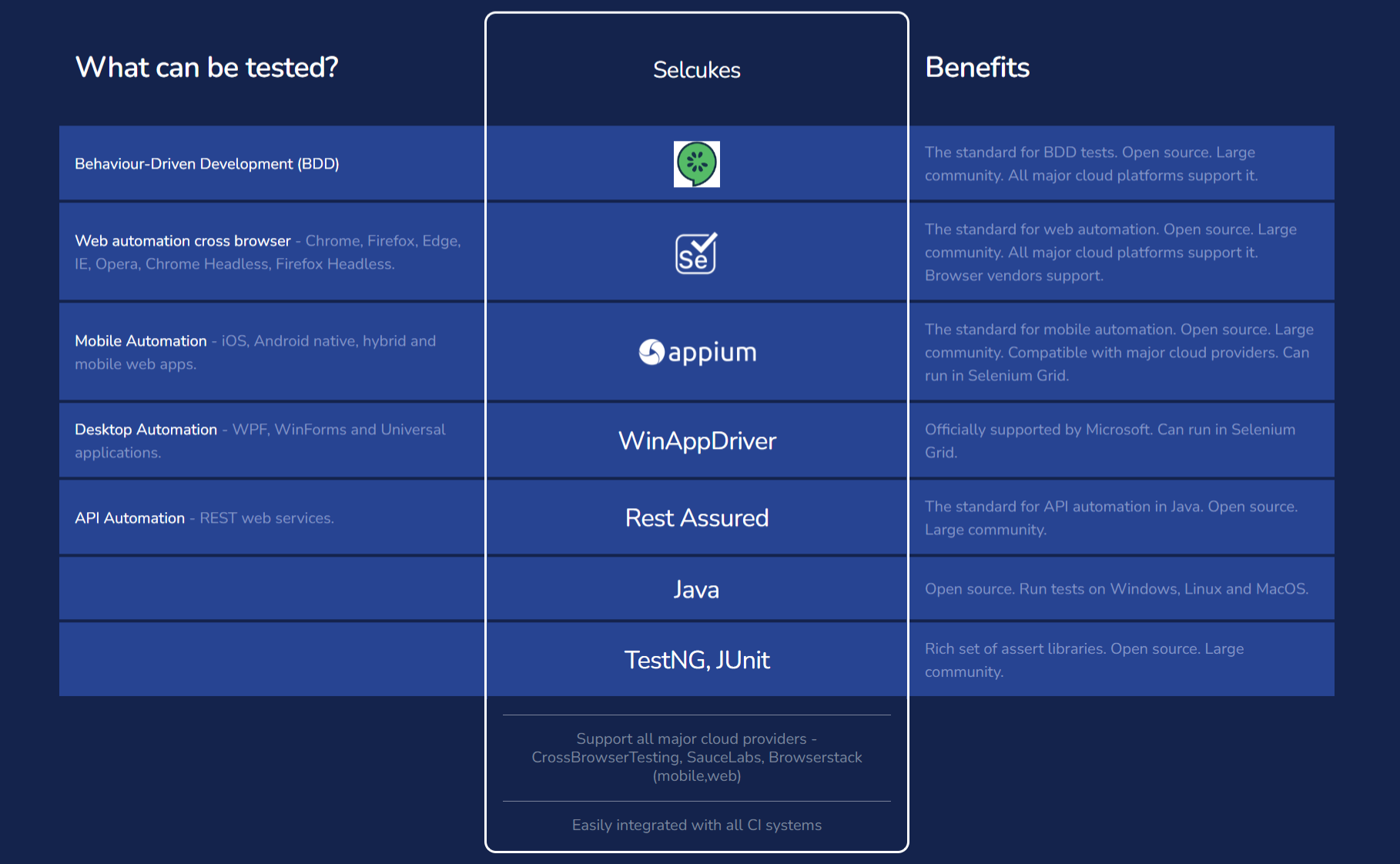Introduction
Selcukes is an open source library that aims to build high-quality and highly scalable automated tests
Features
- Easy add new logic to your tests without causing regression issues. Control the whole execution workflow - change browsers or reuse them. Retry your failing tests to make sure that there is a real problem.
- Automate UI actions or user scenarios on real devices or emulators with Selcukes features from test creation to execution.
- Cross-platform screenshot and video recording on test failure

Getting Started
What you need to start
Java 11
Test Automation is a development activity, so you will need some familiarity with Java. Selcukes uses Java 11, so make sure you have a JDK 11 or later installed.
IDE
You will need a modern IDE to work with Java. We recommend IntelliJ (you can download the Community Edition, which is free, from here. But Eclipse will work fine as well.
A Build Tool
You will also need a build tool, either Gradle or Maven, to run your tests and generate your reports. Make sure you have either Gradle 3.x or higher or Maven 3.3.x or higher installed.
Quick Start
The quickest way to create a new project is to take one of the starter projects on Github. You can find the starter project for TestNG at https://github.com/selcukes/selcukes-java-skeleton[selcukes-java-skeleton].
You can clone this repository:
git clone https://github.com/selcukes/selcukes-java-skeleton.git
cd selcukes-java-skeleton
Or simply download a zip file from here.
If you are using Maven, you can also create a new project using one of the Selcukes Maven Archetypes.
So far so good?
The starter project comes with a demo test that you can run. From the command line, run either
$ mvn clean verify
or
$ gradle clean test